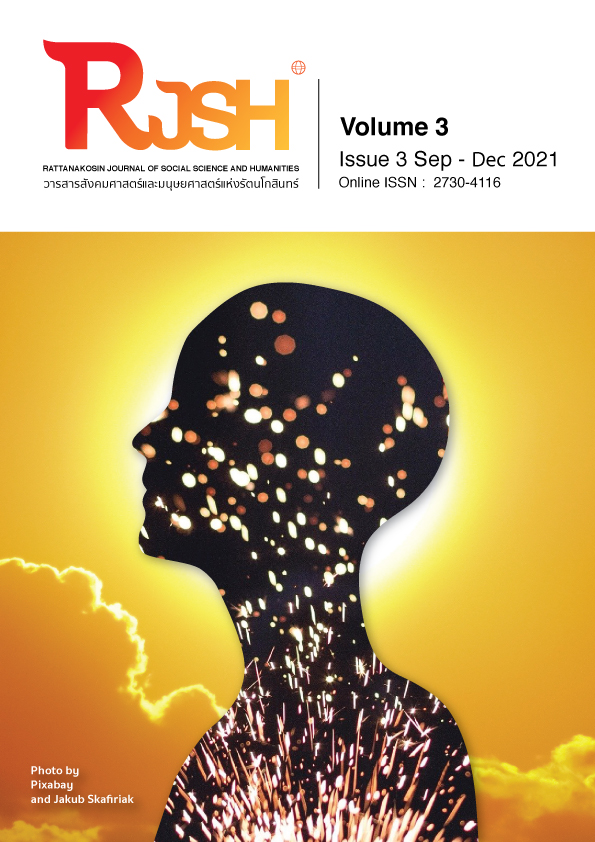360° Benchmarking : High-Performance Innovative Organization Tools
Main Article Content
Abstract
The objective of this article is to present 360O benchmarking, a powerful innovative organizational tool. It discusses the concept of doing business in the digital economy era, where business organizations should have important tools to increase the potential of the organization to be efficient and survive in the midst of free competition. The 360O benchmarking begins with knowing the source of information, data collection methods, the relevance of the data to the planning and implementation goals to determine the success or failure of the process. The 360O benchmarking technique consists of setting goals and development directions, knowledge management, competitive analysis, sensitivity, and risk analysis, strategic planning, relative competency assessment, enhancing the capacity of learning, coordination, and communication, motivation, and participation including its application. In the industrial section, the benchmark has been used for more than 20 years for example in the case study of Xerox with the PAIA process. This article will help readers understand how to compare modern competencies and the whole process of the 360 benchmarking, including ethics. It will be a useful tool for organizational development in accordance with 360O management methods in the digital economy era. In short, performance comparisons will benefit organizations in making short-term projects successful. It also creates new corporate culture, an innovative organization, vision and long-term mission development, and sustainable growth. Moreover, it can be applied to the development of various organizations: the government, state enterprises, private organizations, educational organizations, and others for higher performance.
Article Details
The content within the published articles, including images and tables, is copyrighted by Rajamangala University of Technology Rattanakosin. Any use of the article's content, text, ideas, images, or tables for commercial purposes in various formats requires permission from the journal's editorial board.
Rajamangala University of Technology Rattanakosin permits the use and dissemination of article files under the condition that proper attribution to the journal is provided and the content is not used for commercial purposes.
The opinions and views expressed in the articles are solely those of the respective authors and are not associated with Rajamangala University of Technology Rattanakosin or other faculty members in the university. The authors bear full responsibility for the content of their articles, including any errors, and are responsible for the content and editorial review. The editorial board is not responsible for the content or views expressed in the articles.
References
พงษ์ศักดิ์ ผกามาศ. (2553). ระบบไอซีทีและการจัดการยุคใหม่. กรุงเทพฯ : สำนักพิมพ์ Witty.
พงษ์ศักดิ์ ผกามาศ. (2554). การจัดการความรู้: เครื่องมือพัฒนาองค์กรตามแนวทางการบริหารสมัยใหม่. วารสารวิชาการและวิจัยมหาวิทยาลัยภาคตะวันออกเฉียงเหนือ, 3(1), มกราคม-มีนาคม. 151-168.
Ashuri, B., Wang, J., Shahandashti, M., & Baek, M. (2019). A Data Envelopment Analysis (DEA) Model for Building Energy Benchmarking. Journal of Engineering, Design and Technology, 17(4), 747-768.
American Productivity & Quality Center. (2002). Benchmarking: A Guide for Your Journey to Best-Practice Processes. Texas : American Productivity and Quality Center.
Bi, H.H. (2017). Multi-Criterion and Multi-Period Performance Benchmarking of Products and Services: Discovering Hidden Performance Gaps.
Benchmarking: An International Journal, 24(4), 934-972.
Bogan, E.C., & English, J.M. (2014). Benchmarking for Best Practices: Winning Through Innovative Adaptation. Canadian: McGraw-Hill Publisher.
Bogetoft, P. (2013). Performance Benchmarking (Measuring and Managing Performance. New York: Springer Science+Business Media.
Camp, C.R. (2006). Benchmarking: The Search for Industry Best Practices That Lead to Superior Performance. Productivity Press Publisher. London: Taylor & Francis Group.
Erdil, A., & Erbıyık, H. (2019). The Importance of Benchmarking for the Management of the Firm: Evaluating the Relation between Total Quality Management and Benchmarking. ScienceDirect, Procedia Computer Science, 158, 705–714.
Garengo, P. (2019). Benchmarking. Sartor, M. and Orzes, G. (Ed.) Quality Management: Tools, Methods, and Standards, Emerald Publishing Limited, 91-107.
Hosseinpour, A., Peng, Q., & Gu, P. (2015). A Benchmark-Based Method for Sustainable Product Design. Benchmarking: An International Journal, 22(4), 643-664.
Hungund, S., & Mani, V. (2019). Benchmarking of Factors Influencing Adoption of Innovation in Software Product SMEs: An Empirical Evidence from India. Benchmarking: An International Journal, 26(5), 1451-1468.
Kazançoğlu, Y., Özbiltekin, M., & Özkan-Özen, Y.D. (2019). Sustainability Benchmarking for Logistics Center Location Decision: An Example from an Emerging Country. Management of Environmental Quality, 31(5), 1239-1260.
Scott, R. (2011). Benchmarking: A Literature Review. Academic Excellence, Centre for Learning & Development, Edith Cowan University, 1-14.
Singh, G., & Pandey, N. (2019). Revisiting green packaging from a cost perspective: The remanufacturing vs new manufacturing process.
Benchmarking: An International Journal, 26(3), 1080-1104.
Søilen, K., & Tontini, G. (2013). Knowledge Management Systems and Human Resource Management Policies for Innovation Benchmarking: a Study of ST Ericsson. International Journal of Innovation Science, 5(3), 159-172.
Staiger, R.D., Schwandt, H., Puhan, M.A., & Clavien, P.A. (2018). Improving Surgical Outcomes through Benchmarking. New Jersey : John Wiley & Sons. Inc., United State of America.
Warnecke, D., Wittstock, R., & Teuteberg, F. (2019). Benchmarking of European Smart Cities – a Maturity Model and Web-Based Self-Assessment Tool. Sustainability Accounting, Management and Policy Journal, 10(4), 654-684.
Xerox Corporation, (2021). Benchmarking Approaches. Access on: 25 June 2021. Available from: http://www.xerox.com


